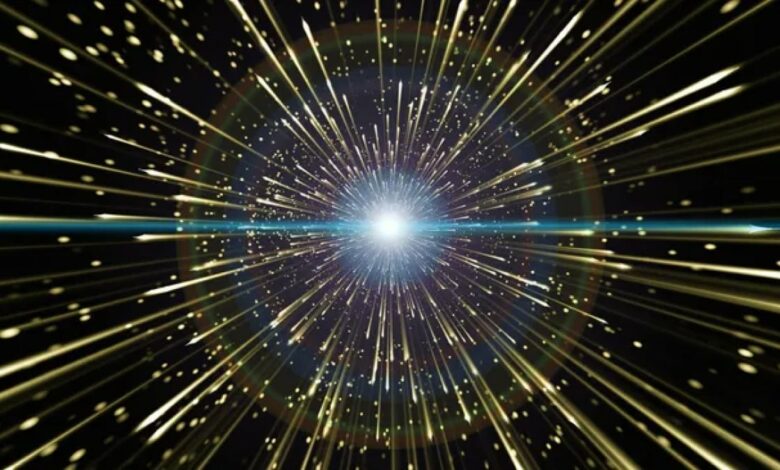Black hole explosions caused by Hawking radiation could reveal new physics

Primordial black holes (PBHs), possibly formed shortly after the Big Bang, could experience explosive events throughout the universe. A recent study led by theoretical physicists Dr. Marco Calzà and Dr. João G. Rosa from the University of Coimbra suggests that these bursts, driven by Hawking radiation, could be detectable with the advanced sensitivity of future telescopes. Such events, if observed, could provide deeper insight into undiscovered particles and reveal fundamental physics.
Understanding primordial black holes
PBHs are believed to have emerged from high-density regions in the early Universe, just a fraction of a second post-Big Bang. Initially theorized in 1967 by scientists Yakov Zeldovich and Igor Novikov, these compact entities could have been as small as subatomic particles. Unlike their larger counterparts, PBHs could have formed independent from the collapse of stars, but arise from energy fluctuations in the primordial ‘soup’ of particles in the universe.
A major unanswered question is whether PBHs could be responsible for dark matter, which makes up 85% of all matter in the cosmos but remains undetected. Cosmological models support the theory of PBHs, but direct observation has yet to confirm their existence.
The role of Hawking radiation
A defining characteristic of PBHs is their ability to emit Hawking radiation, a quantum process theorized by the late Stephen Hawking. This process suggests that black holes gradually lose mass by releasing radiation as virtual particle pairs appear near the event horizon. In larger black holes, this radiation is virtually undetectable, but smaller PBHs would emit a significant amount, potentially revealing their presence to astronomers.
According to Dr. Calzà, lighter black holes can emit photons, electrons and even neutrinos in detectable amounts. As they lose mass, PBHs radiate more intensely, eventually leading to a powerful burst of radiation – an event that gamma-ray and neutrino detectors actively monitor.
Investigating PBH explosions for new discoveries
In the study published in the Journal of High Energy Physics, Dr. Calza and Dr. Rosa methods to monitor the mass and spin of PBHs as they approach their final moments. Insights into the spin of a PBH could indicate the presence of new particles such as axions, predicted by string theory. Dr. Rosa suggests that observing PBH explosions could reveal new physics by distinguishing particle models via the Hawking radiation spectrum.
Upcoming high-sensitivity telescopes could soon allow scientists to detect these cosmic events, shedding light on the elusive dark matter and increasing understanding of the fundamental structure of our universe.




